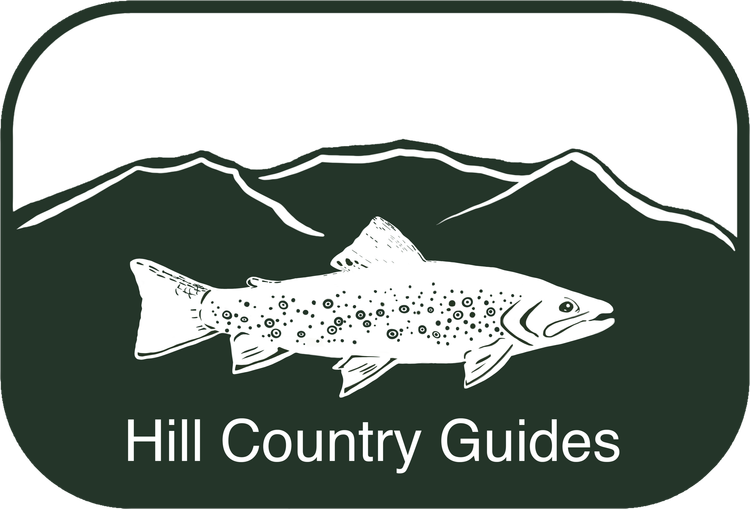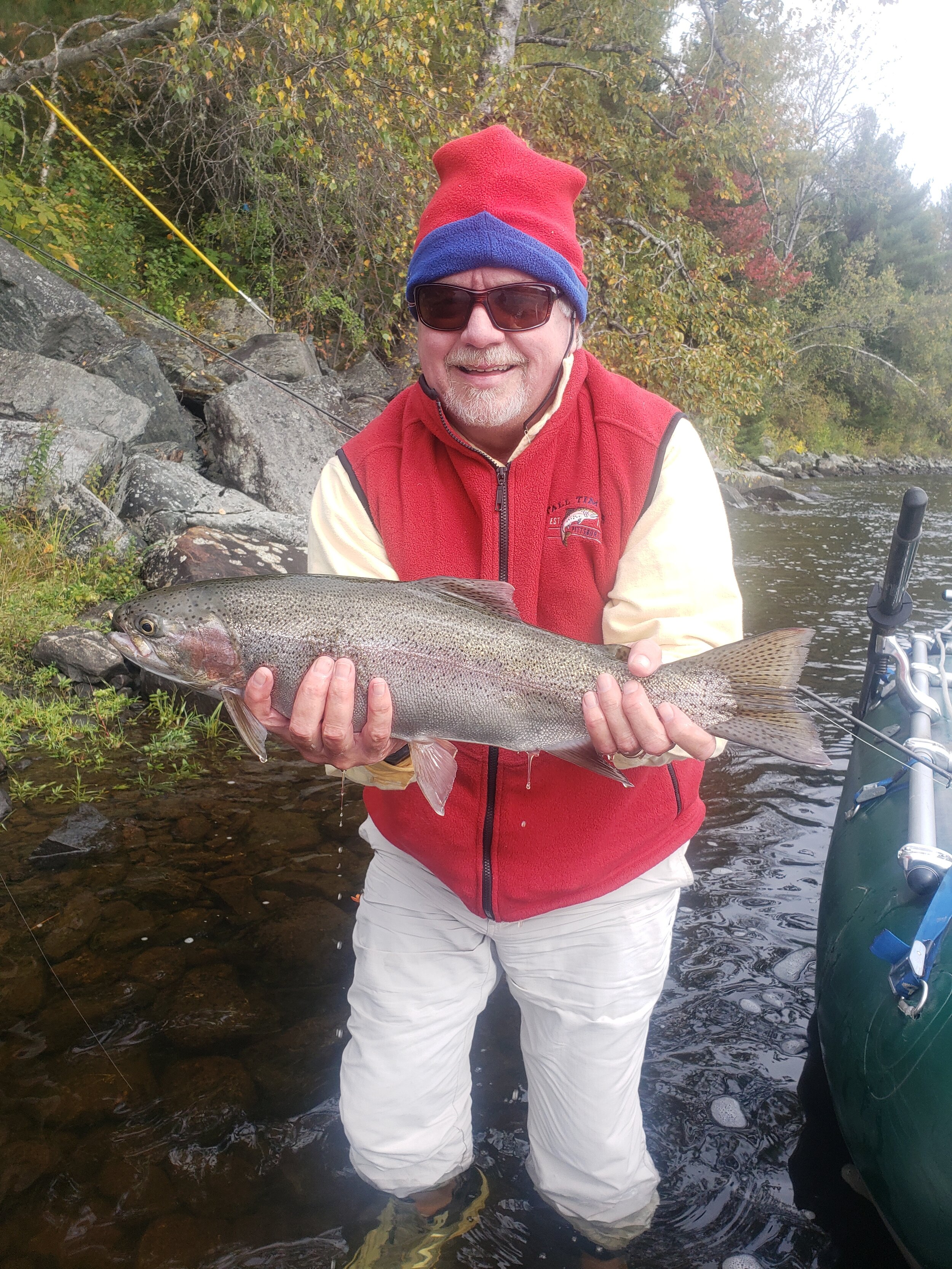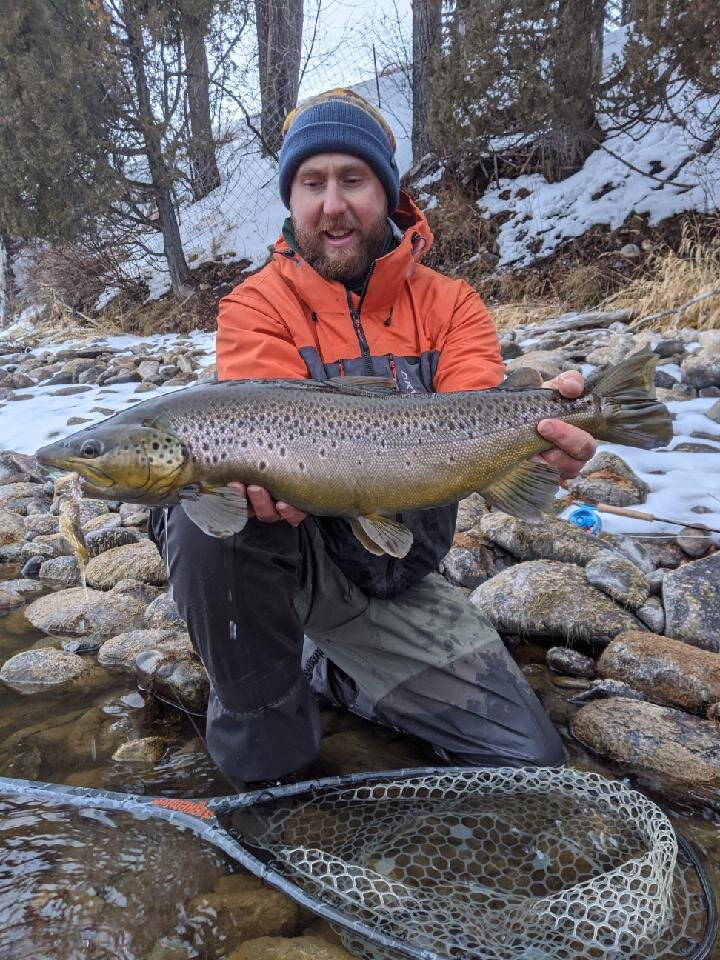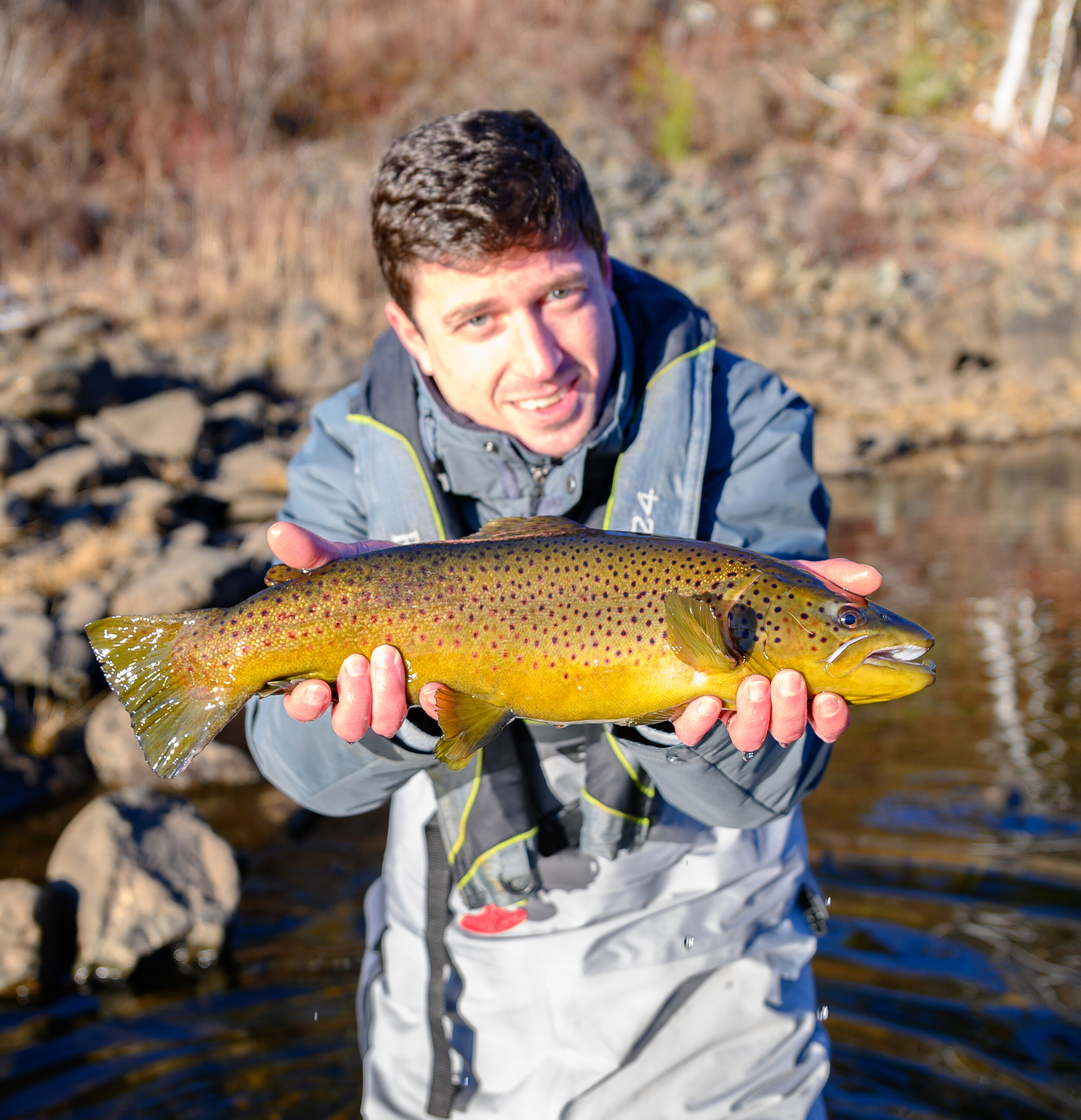The Streamer Craze
Fishing big streamers to large predatory fish is hot right now. Whether to target trophy brook trout, browns trout, musky, pike, or mako sharks, fishing large streamers is in. It’s cool and it’s sexy. Big flies have taken over social media, but despite the craze there are relatively few anglers catching big fish on big streamers. With streamer fishing being all the craze why aren’t more people successful fishing this way?
It took me two full seasons of streamer fishing for trophy trout before I caught my first big trout on a streamer. And when I did it wasn’t the glorious violent visual strike that I had imagined. I was floating the Saco river with my good friend Milan. I’d been working a white sex dungion across the river for hours without a bite. I’d just taken a break, turning to ask Milan if he thought we should switch tactics, when a 21” brown trout inhaled the fly… I’ll get back to this story in a little bit.
The Missunderstanding of Targeting Aggression
Modern streamer fishing was popularized by the romantic idea that the biggest trout in the river can only be caught by triggering their dominant, territorial behavior. Flies with names like the Home Invader and intruder speak to this philosophy. The idea, that the biggest baddest fish in the river need to be antagonized into eating, has motivated alot of anglers to tie boisterously large and bright flies. Many streamers I have seen tied commercially and recreationally are so big and bushy that they cast like wet towels and move through the water like gobs of hydrilla.
Unfortunately many anglers do not fish with the vulnerability of death in mind. Ripping streamers accross the current with frantic strips that lack pauses. These hyper retrieves can work on aggressive trout, specifically trout in pre-spawn mode. However overly aggressive streamer retrieves will work far less often than retrieves that thoughfully mimic prey in distress.
The innovators of streamer fishing, like Kelly Galloup and Tommy Lynch, designed flies to show the vulnerability of death. Flies like the Sex Dungeon by Galloup and Drunk and Disorderly by Lynch, are tied with deer hair heads and lighter back sections that are meant to “kick” to the side when stripped. If you have ever seen a dying minnow you will notice that they make quick movements but then turn broadside. It is this broadside motion that imitates death and causes fish to strike. The other thing that dying minnows do is rest in areas of vulnerability. While healthy minnows and fish dart through areas of danger to areas of safety, a distressed fish often doesn’t make it out of the danger zone before losing energy, needing to pause when they shouldn’t.
The Dangle
Looking back at my first big brown on a streamer this is what happened. When I turned to talk to Milan my streamer stalled, immitating a struggling baitfish. Without knowing it I was using a technique my good friend Jon Zukowski, (owner of Mountain High Fly in Lincoln NH) calls the dangle. John likes to fish weighted streamers on floating lines, after every retrieve he lets the fly swing to a stop so that it dangles in the current. This technique is deadly when targeting large trout that hold mid-river in the head, inside seams, or tailouts of pools.
Client Dave Warlick with a two foot beast of a rainbow that ate a baitfish jig swung to a dangle at the inside seem of a large pool.
The Pop and Stop
My good friend and fellow streamer junky Bob Mallard first introduced me to the pop and stop on the Kennebec river in northern Maine. The kennebec has miles of classic undercut banks that hold trophy brown trout. Enough good bank water that you can spend a day moving down river fifteen feet off the shore casting tight against the bank in anticipation of large golden brown boils. My first day on the Kennebec was fruitless until Bob took the front casting position and began working casts tight to the bank, retrieving with a quick “pop” of the rod tip, followed by a pause while he retrieved the slack caused by the pop followed by another pop and stop. While tripping and pausing can create a similar action, the pop and stop results in an exaggerated kick to the fly that turns it broadside. Bob proved the effectiveness of this technique on his third cast when a 20” female brown inhaled his white sex dungeon. It was the fish of the day and it took Bob three casts to catch her. This technique works best when fish are pressed tight to banks. It is key to fish this technique from a moving boat with a cast aimed downstream of the boat so that as the streamer is retrieved it will move accross the river. Unweighted or lightly weighted streamers with deer hair heads such as zoo cougers, sex dungeons, and Drunk and Disorderly streamers and unweighted Double Deceivers work well for this technique.
This fish ate just as this Drunk and Disorderly streamer turned boradside on the stop. First strip off of a rip rap bank.
The Down Stream Death Jig
When I first fished the White River I was adimant about using the pop and stop to cover the banks. That is until I fished with guide Barry Annalaura. Barry fished streamers differently than I had ever seen. Instead of casting large deer hair flies tight to the banks on a downstream presentation he did what seemed to be the opposite. Fishing sparsly tied double decievers weighted with a large fish skull, he cast them upstream and stripped them downstream retrieving with a solid strip followed by a long pause before another solid strip. Barry had figured out that, on the White, more big browns were going to eat dying rainbow trout tumbling down the river five to ten feet off of the bank than prey fleeing from the bank. This technique is best used on big water when prey are dying in the drift. In the case of the White River that bait fish comes in the form of dying 8-12 inch rianbow trout often the victims of being gut hooked by bait fishermen. Scuplin, crayfish, and a variety of minnows can be fished similiarly depending on your rivers forage.
The authors version of the death jig streamer. Tied with craft fur this fly is aerodynamic and falls through the water column quickly.
The Roll Cast Reversal
My good friend Milan Krainchich has been guiding in Idaho at Teton Valley Lodge for the last six years and spends almost all of his free time throwing streamers to alpha brown and cutthroat trout on the South Fork of the Snake River. The South Fork has a high density of whitefish and Milan has done well fishing a pattern called the goldie to mimic this common forage fish. The goldie is a lightly wieghted aerodynamic streamer and Milan has good luck stripping the fly off of the bank with a strip pause retrieve before making a half roll cast to send the fly back towerds the bank before again retrieving towards the boat. This quick back and forth motion drives big fish crazy as they see a minnow in serious distress. The one downside to this technique is that you must be ready to strip set right after the roll cast as the fish will often eat as the streamer turns back towards the bank.
Milan with a winter time Goldie eater. Focusing on what prey items live in your watershed is key to streamer success.
The Dead Drift Of Death
While much less exciting than the act of stripping a streamer and feeling the slam of an aggressive fish, dead drifting streamers can be a lethal technique. My friend Jeremy Hunt of Flies and Guides out of Branson Missouri has sold thousands, maybe millions of flies. One of his most popular patterns is called the megga wrom. While the mega worm looks like a white or pink caterpillar what it is really imitating is a dead fish or piece of fish. The shad kill on the White is legendary and when it happens floating a foam wiggle minnow with a white mega worm jig as a dropper is a deadly combo. There are times when fishing sculpin, crayfish, dace, smelt, shad and other normally swimming prey items on a dead drift, will outperform actively fishing the same patterns.
The author with a late winter brown caught tight lining a sculpin pattern through a mid-depth boulder field.
When To Use What Technique?
While the above techniques are all effective they are effective under different conditions, at different times of the year on different waters. So how do you know what will work best where you are fishing? To determine this one must consider the following:
Water Temperature: when water temps are coldest fish are less likely to chase bait and more likely to choose smaller, easier to catch prey items. Techniques like the dangle, death jig, and dead drift tend to work best. When water temps are warmer both prey and predator are likely to be moving around more so pop and stop presentations and the roll cast reversal may get more attention than the slower presentations.
Flow: When water levels bump, and water temps are good small fish will move to the banks, the pop and stop can work well under these conditions as can the roll cast reversal, and the death jig. Under higher water conditions the key is to cover water with whatever technique you are using. Under low flow conditions fishing faster riffles with the dangle, dead drift of death or death jig can work effectively. Fishing slower water at low flow is most effective done at night with a mouse or streamer on a swing to dangle, or during winter months when large trout hold in slow water.
Low Light: Typically I can get away with more animated retrieves like the pop and stop when there is good cloud cover. But really any technique can work under cloud cover, as most fish feel more bold to eat streamers under low light conditions.
Bright Light: Streamer fishing is typically not as effective under bright light but fish can still be caught on streamers under direct sunlight. Downsizing your offering and using slower presentations like the death jig, dangle and dead drift will take fish under the sun.
In Summary: Energy Input Must Exceed Energy Output
The above advice is all based on prior experience, and will often work. Of course there are going to be times when fish seem to break all of these logical rules. The most important thing to remember in fishing streamers is that, for a trout to survive, energy input must exceed energy output. When water temps are prime, 50 to 65 degrees, a fish’s metabolism is high and they can afford to move further to catch prey items. Conversely when fish metabolisms are slow fish will expend less energy to obtain food. This is also why a larger trout is more willing to move further for a larger prey item. Keep the vulnerability of death in mind the next time you streamer fish and you might find that you get tight more often by convincing trout that their energy input will exceed their energy output.
Tight lines,
Nate



















